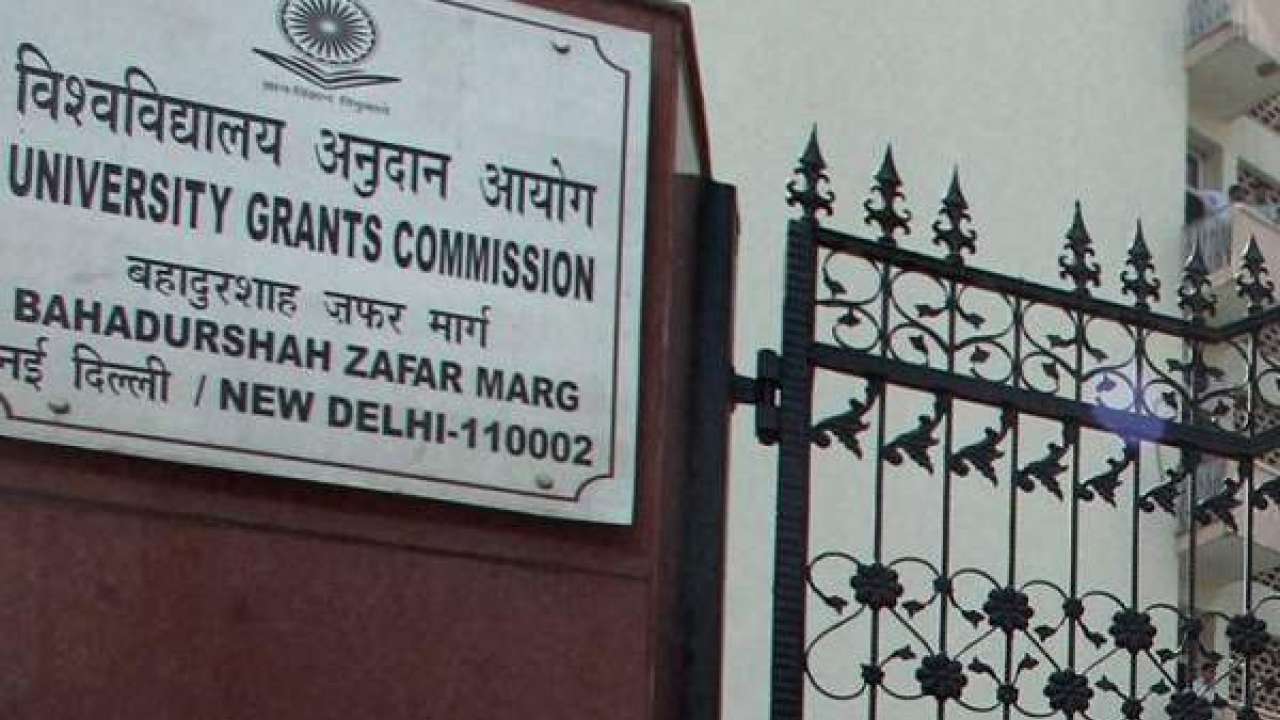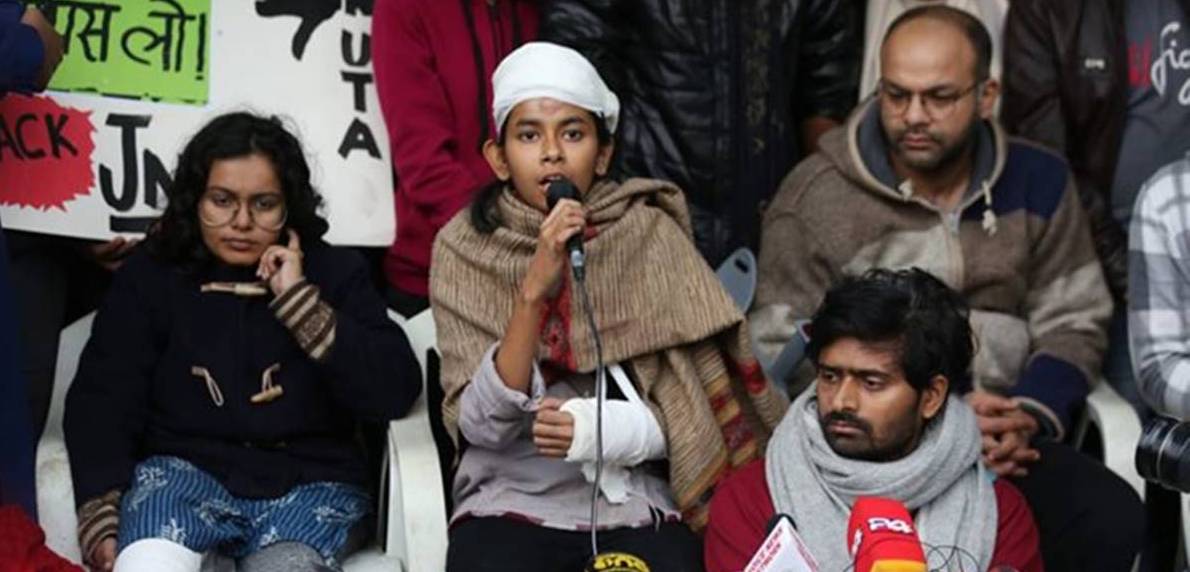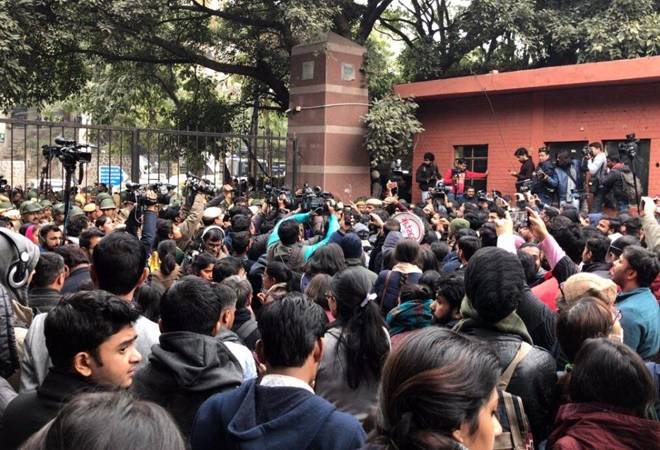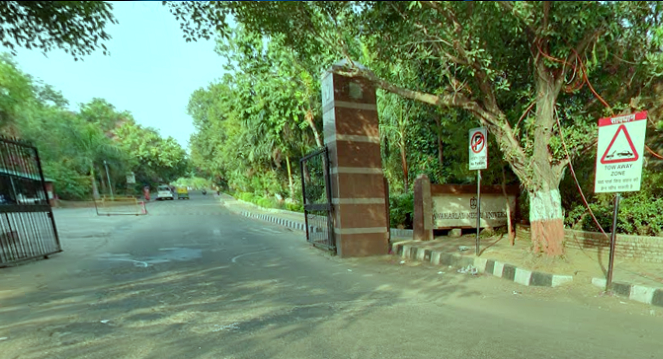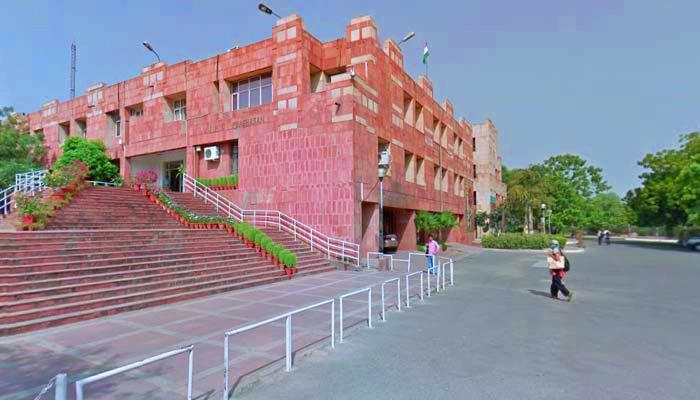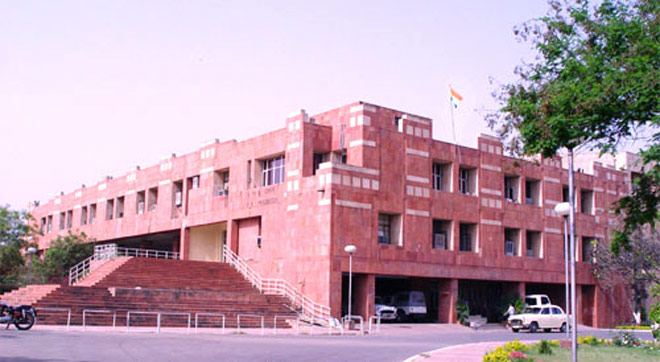A new academic session begins at JNU. A new administrative subjugation begins with it too. A newness that seeks to demolish the old; a newness that feels threatened by the old. Yet another circular from the JNU administration braces the student community, which could very well change, quite literally, the face of the university. This circular, authorised by the department ‘Swachh JNU’, notifies that the posters that have donned the walls of the university for years are to be removed because they violate the ‘Delhi Defacement Property Act-2007’.
These posters which are more like innovative ideas than dry information, more pedagogic than standard class room teaching, and just as insightful as a well-researched, cogently argued scholarly article, are deemed as “defacement” by the administration. A Kafkaesque dissonance dawns – just what do these concepts of “cleanliness” and “beauty” mean to the administration? How do these posters that are banners of creative expression, canvases of acute critique, platforms of revolutionary ideas and mirrors of socio-cultural state of society, “pollute” and “impair” the university space?
Just as potently social and cultural structures shape individuals and their mindsets, the physical structures too impinge upon a person and define his/her ideas and individual self. We don’t simply inhabit a space but the space inhabits us too; it shapes our perspectives, influences our politics and builds our mindsets. This co-constitutive relationship between a person and their space, could not be truer especially for a place like JNU.
The walls of the academic buildings, libraries, canteens and hostels plastered with posters- both big and small, work as pedagogical tools which shape young minds to become informed and aware, to question, to critique and dissent. It adds to the vibrancy of learning, establishes an enchantment with philosophers, compels one to deeply ruminate on socio-economic perils in society, fosters a political sensitivity to national and global issues and awakens one to the revolutionary power of art. An art that is satirical, provocative, insightful and very, very political. It is this politics of art which the current administration finds “unclean” and “defacing”.
And it is worth noting just how “unclean” and “defacing” the walls of JNU are. They are imprinted with epochal words of Karl Marx on the brutality of capitalism; have bearings of Pash’s poetry on resistance politics; speak of the subjugation of Kashmiris under AFSPA through a Bob-Dylan song, encapsulate a caricature that explains the privatisation of education; demonstrate the perpetual existence of caste system through a comic strip; encourage one through a Pablo Neruda’s poetry on hope, charter out Eduardo Galeano’s indictments of imperialism and neo- liberalisation and are the published manifestos of women activists who don’t find spaces to tell their stories.
These walls are loud. These walls dissent. These walls are politically incorrect.
So, it’s really not about “beauty” and “cleanliness”. It is about ideas and ideologies. About power and authority. About discipline and surveillance. About fear and social control. The physical space is the site of ideological contestation. These walls need to be mute, need to be meek, need to be quiet, need to be submissive. These posters are more than simply an artistic rendition of reality or a symbolic representation of an idea. They are cultural products of the social and political conditions of the times we live in and are significant contributors to the formation of dominant ideas which govern the university as a learning space. These walls breathe life into the university which is premised on the ideology of questioning, critiquing and dissenting. These poster laden walls speak of the politics of space; of an assertion of a claim that the students and faculty have over the university as a learning space.
The intricate relationship between architecture, authority and control explains how the physical landscape becomes a political project of the powerful. The current administration is threatened by the dominant ideology of the university which seeks to challenge the status quo. The old has to be removed to make way for the new. The newness where the walls are not alive with politics, protest and poetry. A newness where the walls are bare, the minds are bare and the hearts are bare.
Moreover, the ideology of the current administration that seeks to annihilate the pedagogical and political heritage of the institution is premised on their conception of space. The vision of JNU has been to utilise physical space as a site to dissipate ideas that celebrate the spectacle of learning, the energy of creative expression and the spirit of dissent. However, the current administration derives their sense of “beauty” and “cleanliness” through a rigid compartmentalisation of space.
This new sense of “cleanliness and beautification” is premised on a brutalised notion of functionality, where every part of the university is supposed to have a particular function, a machine-like utility.
Therefore, the buildings cannot be canvases of creative expression or sites of learning but simply walls of concrete. Therefore, the posters should be placed in “designated areas like assigned billboards”. Therefore, it is unlawful to stick posters on the walls of the buildings.
The attack on the walls is symptomatic of a larger attack on the public spaces of the university. It points to a highly disciplinarian, compartmentalised and coercive way of regulating space. The fact that students cannot protest within the hundred meters radius of the Administrative Building, the shutting down of dhabas at night and now the prohibition of putting posters on the walls, are measures that shrink the public space for students. These restrictions dictate how one ought to behave as part of the university.
That dhabas serve a utilitarian purpose of consumption of food alone and are not to become spaces of political discussions, debates and demonstrations. The classrooms are the only spaces of learning and learning should be limited within the academic buildings. Learning is not to be taken outside into the open, in the lawns or under the sun.
The protests and marches cannot cross a geographically demarcated area because there is a ‘designated space for protests’ on campus. The JNU administration through its logic of ‘functional spaces’ and a highly dogmatic ideology, suppresses dissent, subjugates the learning spirit, restricts mobility and clamps down on the agency of students. The ruthless control over public spaces creates a campus that gradually becomes incapable of collisions and confrontations. This is how power and social control commingle together to produce spaces which are bereft of agency, are functional and disciplined.
However, to end with this bleak despondency does not befit the political and pedagogical legacy of the institution. While a continuous spate of circulars seeks to exhaust the spirit of the students and faculty, it is encouraging to remind oneself of a poster in JNU that celebrates the poetry of Pablo Neruda and that reads,
“You can cut all the flowers but you cannot keep spring from coming.”
One hopes that a spring blossoms very soon in JNU.
Aishani Khurana is pursuing her M.Phil in Sociology at JNU.



